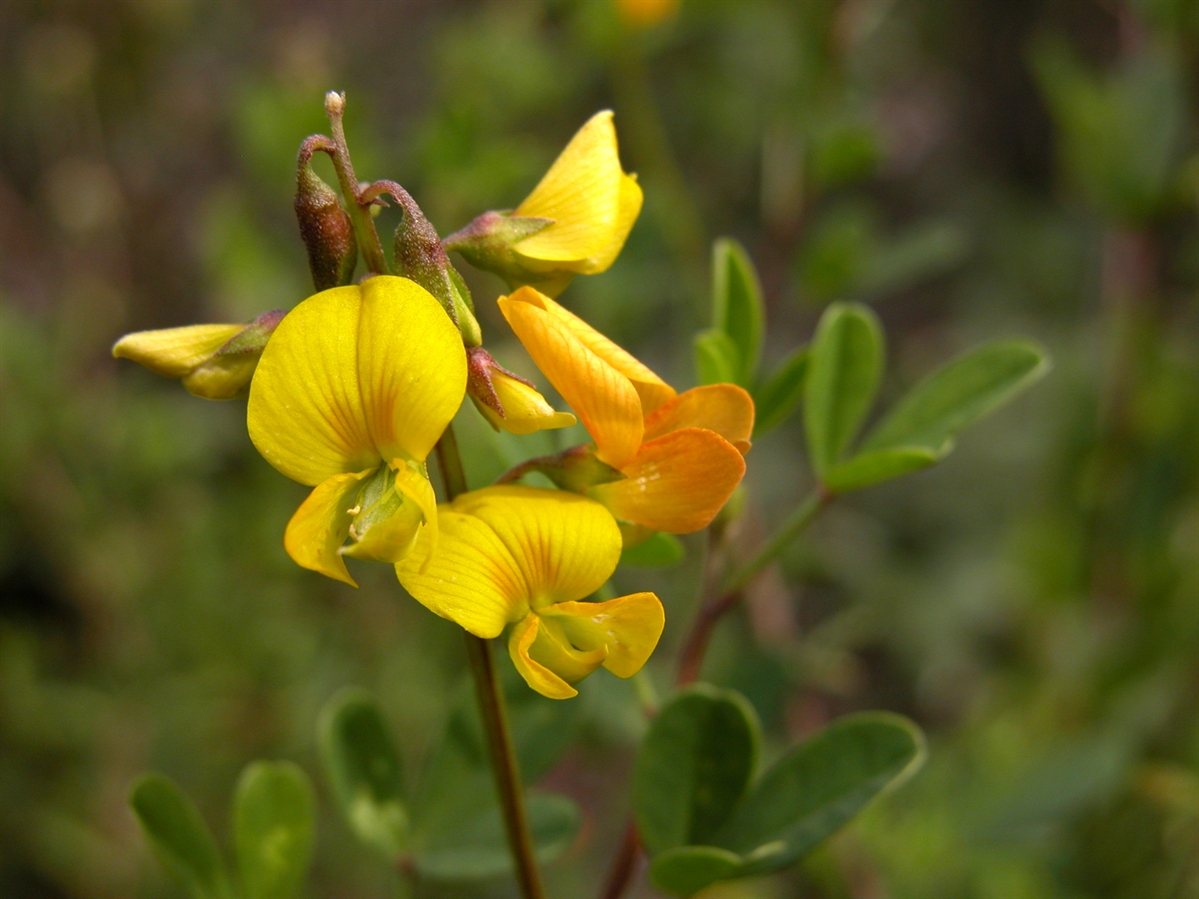Habit: Crotalaria pumila grows as a perennial as a ground cover or erect as a tall herb to 40 cm in height. The trifoliate leaves are arranged alternately with small stipules at the petiole base. The leaflets are up to 4 cm in length, obovate with a retuse apex and entire margin.
The complete, perfect, zygomorphic flowers are terminal or axillary in groups of 1-5 flowers. The calyx has 5 partially fused green sepals forming a tube with the sepal lobes the same length as the tube. The corolla has 5 orangish-yellow petals, the upper enlarged to form the banner and the lower 2 fused to form the keel. There are 10 diadelphous stamens. The ovary is superior and has a single locule with numerous seeds. The fruit is a slightly pubescent, yellowish legume that becomes inflated and is up to 3 cm in length at maturity. Before dehiscence the seeds become loose within the legume and make a rattling sound.
Habitat: Crotalaria pumila grows in Human Altered environments (old fields, yards roadsides) as well as in Pine Woodlands.
Distribution: Crotalaria pumila occurs in all island groups within the Lucayan Archipelago as well as the southern United States, the entire Caribbean region, and Mexico south to South America.
Medicinal/Cultural/Economic usage: Crotalaria sp. has been used to treat colds in the Lucayan Archipelago. Crotalaria species are very toxic and C. retusa has been known to create a condition in livestock called walking disease in which the animals can walk but are unable to turn.



